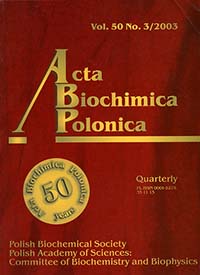Prostaglandin-J(2) upregulates expression of matrix metalloproteinase-1 independently of activation of peroxisome proliferator-activated receptor-gamma.
Abstract
Peroxisome proliferator-activated receptor-gamma (PPARgamma) is a ligand-inducible nuclear receptor that functions as a transcription factor involved in lipid metabolism, inflammatory response and angiogenesis. The most potent endogenous PPARgamma activator is 15-deoxy-Delta(12,14)prostaglandin-J(2) (15d-PGJ(2)), whereas synthetic ligands include the oral antidiabetic drugs thiazolidinediones (TZDs). Activation of PPARgamma was reported to decrease the synthesis of matrix metalloproteinases (MMPs) in vascular smooth muscle cells and macrophages. We aimed to investigate the effect of PPARgamma ligands on expression of MMP-1 and urokinase plasminogen activator (uPA) in human microvascular endothelial cells (HMEC-1). We found that treatment of HMEC-1 with 15d-PGJ(2) increased the synthesis of MMP-1 protein up to 168% comparing to untreated cells. TZDs (ciglitazone and troglitazone), more potent activators of PPARgamma in HMEC-1, did not influence MMP-1 production, arguing against the involvement of PPARgamma in this process. Importantly, the stimulatory effect of 15d-PGJ(2) was reversed by the antioxidant N-acetyl-cysteine (NAC), suggesting a contribution of oxidative stress. We demonstrated also that 15d-PGJ(2) did not change the activity of MMP-1 promoter, but increased the stability of MMP-1 mRNA. In contrast, 15d-PGJ(2) very potently inhibited the synthesis of uPA. This effect was in part mimicked by ciglitazone and troglitazone implying an involvement of PPARgamma. Accordingly, NAC did not modify the inhibitory effect of 15d-PGJ(2) on uPA expression. In conclusion, we postulate that 15d-PGJ(2) may differently regulate the synthesis of proteases involved in angiogenesis: it upregulates MMP-1 expression in HMEC-1 through induction of oxidative stress, and inhibits uPA synthesis partly by activation of PPARgamma.Acta Biochimica Polonica is an OpenAccess quarterly and publishes four issues a year. All contents are distributed under the Creative Commons Attribution-ShareAlike 4.0 International (CC BY 4.0) license. Everybody may use the content following terms: Attribution — You must give appropriate credit, provide a link to the license, and indicate if changes were made. You may do so in any reasonable manner, but not in any way that suggests the licensor endorses you or your use.
Copyright for all published papers © stays with the authors.
Copyright for the journal: © Polish Biochemical Society.


